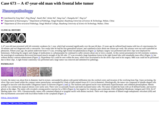
Background Scientific research in the 21st century is more data intensive and collaborative than in the past. It is important to study the data practices of researchers – data accessibility, discovery, re-use, preservation and, particularly, data sharing. Data sharing is a valuable part of the scientific method allowing for verification of results and extending research from prior results. Methodology/Principal Findings A total of 1329 scientists participated in this survey exploring current data sharing practices and perceptions of the barriers and enablers of data sharing. Scientists do not make their data electronically available to others for various reasons, including insufficient time and lack of funding. Most respondents are satisfied with their current processes for the initial and short-term parts of the data or research lifecycle (collecting their research data; searching for, describing or cataloging, analyzing, and short-term storage of their data) but are not satisfied with long-term data preservation. Many organizations do not provide support to their researchers for data management both in the short- and long-term. If certain conditions are met (such as formal citation and sharing reprints) respondents agree they are willing to share their data. There are also significant differences and approaches in data management practices based on primary funding agency, subject discipline, age, work focus, and world region. Conclusions/Significance Barriers to effective data sharing and preservation are deeply rooted in the practices and culture of the research process as well as the researchers themselves. New mandates for data management plans from NSF and other federal agencies and world-wide attention to the need to share and preserve data could lead to changes. Large scale programs, such as the NSF-sponsored DataNET (including projects like DataONE) will both bring attention and resources to the issue and make it easier for scientists to apply sound data management principles.
- Subject:
- Ecology
- Life Science
- Social Science
- Material Type:
- Reading
- Provider:
- PLOS ONE
- Author:
- Arsev Umur Aydinoglu
- Carol Tenopir
- Eleanor Read
- Kimberly Douglass
- Lei Wu
- Maribeth Manoff
- Mike Frame
- Suzie Allard
- Date Added:
- 08/07/2020
